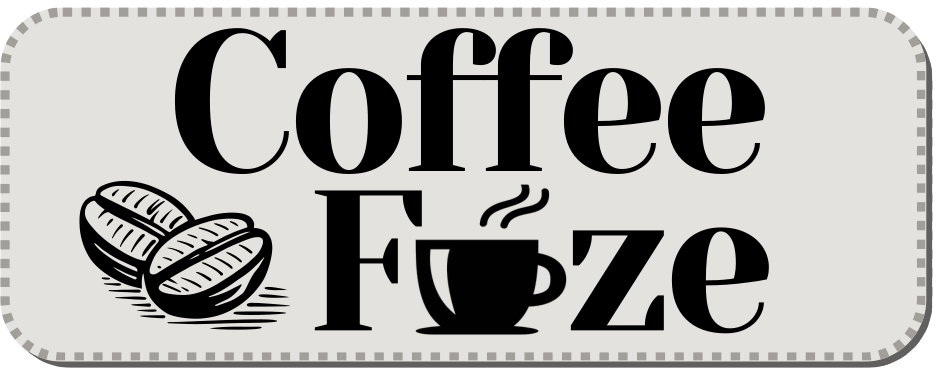
Coffee Ratio Calculator
Create your perfect brew
How to Use the Coffee Ratio Calculator
- Select your brewing method
Choose from Drip, Pour Over, French Press, Espresso, and more. Each method automatically adjusts grind size and brew time. - Set your drink size
Pick the number of cups or enter a custom amount (e.g., 1.5 cups). - Choose brew strength
Decide how bold you want your coffee — Mild, Balanced, Strong, or Robust.
Each option uses a precise coffee-to-water ratio. - Select roast level
The calculator recommends the ideal water temperature for your roast — from Light to Dark. - Click “Calculate Ratio”
Instantly see your coffee and water amounts, grind size, and brewing instructions. - Copy, Share, or Download
- Copy → Copy your recipe text.
- Share → Send your recipe to friends or social media.
- Download → Save a PNG recipe card.
💡 Tip: Switch between grams and ounces anytime with the “Switch to oz / grams” button.
How to Calculate Ratio For Coffee?
Use a formula like 1 : x (one part coffee to x parts water).
- If you choose a ratio of 1:15, it means 1 g of coffee → 15 g (or mL) of water.
- For example, 20 g coffee × 15 = 300 g (or mL) water.
This approach lets you scale the recipe up or down without losing balance.
What is The Optimal Brewing Temperature Range?
The generally accepted range is 195-200 °F (≈ 90-93 °C).
- Lower than ~195 °F (~90 °C), extraction may be weak or sour.
- Higher than ~200 °F (~93 °C), you risk extracting undesirable bitter compounds.
- Staying in that range helps ensure you extract desirable compounds without too much bitterness or under-extraction.
Best Brewing Temperature By Roast Level
| Roast Level | Recommended Temperature | Reason / Notes |
|---|---|---|
| Light Roast | ~ 197–200 °F (92–93 °C) | Light roasts are denser, so a slightly higher temperature helps pull flavors. |
| Medium Roast | ~ 195–198 °F (90–92 °C) | Balanced roast; mid-temperature ensures balance between acidity and sweetness. |
| Dark Roast | ~ 195 °F (≈ 90 °C) | Dark roasts extract faster, so a slightly cooler temperature helps prevent over-extraction and bitterness. |
What Are Recommended Ratios For Different Brewing Methods?
| Method | Typical Ratio Range | Common Use / Notes |
|---|---|---|
| Pour-over / Drip | 1:15 → 1:17 | Balanced and clean flavors |
| French Press / Immersion | 1:13 → 1:15 | Full body, steady contact |
| Espresso / Concentrated | ~ 1:2 | Highly concentrated under pressure |
| Cold Brew (Ready to Drink) | ~ 1:8 | Stronger ratio for long, low-temp brew |
| Cold Brew (Concentrate) | ~ 1:4 | To be diluted later |
If your coffee tastes too strong or too weak, simply select another brew strength in the calculator and it will rebalance your ratio instantly.
How Does Changing The Ratio Affect Flavor, Strength, Extraction?
- Lower ratio (e.g. 1:13) → more coffee per water → stronger, heavier body, more intense flavor, but risk of over-extraction (bitterness) if other factors aren’t adjusted.
- Higher ratio (e.g. 1:17 or 1:18) → lighter, cleaner flavor, but potential for under-extraction (sour, weak) if not enough solubles are pulled.
- The brew ratio is a primary lever controlling brew strength (concentration) and influences how extraction happens.
Should I change The Ratio Depending on Roast Level?
Yes — roast affects extraction speed:
- Light roasts need a bit more coffee (lower ratio like 1:14–1:15).
- Dark roasts extract faster, so they work better around 1:16–1:17.
The Coffee Fuze Coffee Ratio Calculator automatically fine-tunes water temperature based on roast level (e.g., Dark: 185–195°F, Light: 200–205°F).
What Other Factors Influence The Ideal Proportion (Beyond Just Ratio)?
- Grind size: finer grinds extract faster; coarser grinds slower
- Roast level: darker roasts are more soluble, may require looser ratio
- Brew time / method: longer contact (immersion) changes optimal ratio
- Temperature stability: fluctuations reduce consistency
- Water quality / minerals: affects extraction behavior
- Altitude / environment: boiling point changes; may need temp adjustment
What Tools Help Ensure Precision & Consistency?
- Digital scale (0.1 g accuracy or better) for coffee and water
- Temperature-controlled kettle to hit target temps reliably
- Timer to maintain consistent brew time
- Burr grinder for uniform particle size
- Refractometer / TDS meter (for advanced users) to measure brew strength and estimate extraction yield
How to Tune Your Recipe When Brew Doesn’t Taste Right
| Issue | Adjustment Strategies |
|---|---|
| Sour / weak | Tighten ratio (more coffee or less water), increase temp slightly, use finer grind |
| Bitter / harsh | Loosen ratio (more water), lower temp, use coarser grind |
| Inconsistent results | Change only one variable at a time and keep brewing logs for pattern |
What’s The Coffee Fuze Pro Tip for The Perfect Brew?
- Use freshly ground beans, filtered water, and pre-heated equipment.
- Maintain a steady temperature throughout brewing to extract sweetness and clarity.
- Freshness, grind consistency, and temperature control are just as important as ratio precision.
Baseline & Example Recommendation
- Start at 1:15 as a general baseline.
- For pour-over, explore 1:15 → 1:17 to taste.
- For immersion / French Press, 1:13 → 1:15 is common.
- Keep temperature within 195–200 °F (≈ 90–93 °C), adjusted by roast level.
- Refine ratio, temperature, and grind until the cup tastes balanced.